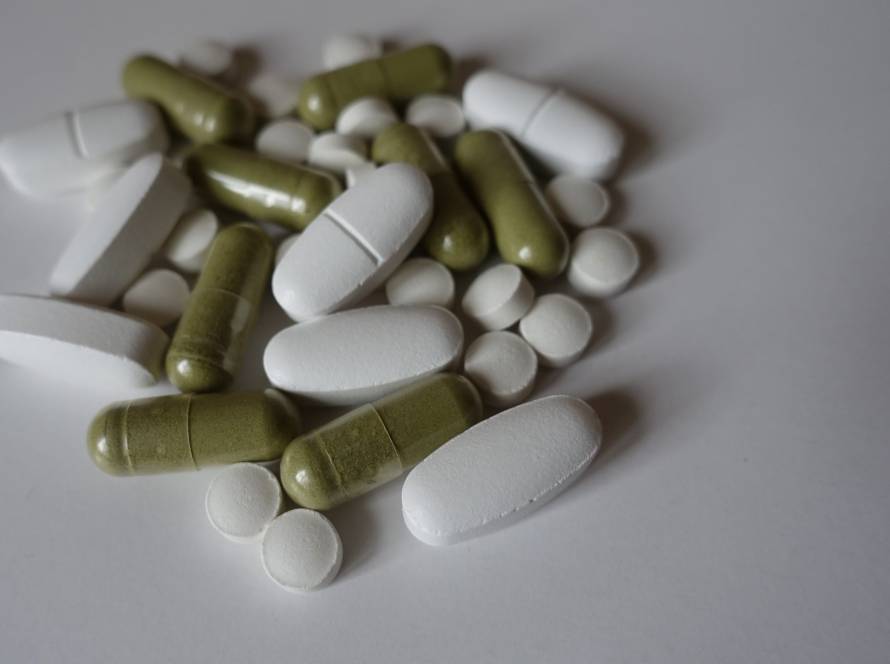The difference between algae and microalgae takes us into an amazing world of aquatic organisms. These organisms create almost half of the world’s primary production. Algae come in thousands of species and contain many bioactive molecules.
In this piece, we’ll get into these organisms features, benefits and real-life uses in health, longevity and sustainability.
Algae vs microalgae: key differences explained
The main difference between algae and microalgae lies in their size and complexity. Algae is a broad term that includes both large, multicellular species like seaweeds (macroalgae) and tiny, single-celled organisms known as microalgae. Microalgae are microscopic and usually exist as individual cells or small colonies, while macroalgae, such as kelp or nori, are visible to the naked eye and form larger structures.
Although both perform photosynthesis and play vital roles in aquatic ecosystems, microalgae are especially valued for their high nutritional content and use in supplements, biofuels and sustainable technologies.
What are algae? A broad overview
Algae are among Earth’s oldest and most diverse organisms. These water-dwelling, photosynthetic organisms come in many sizes, from tiny single cells to massive kelp that can grow up to 60 meters in length. They might look like plants and make their food through photosynthesis, but algae don’t have the specialized parts we’d find in true plants, such as roots, stems, leaves and tissues that transport nutrients.
Algae as photosynthetic aquatic organisms
These remarkable organisms turn water and carbon dioxide into sugar through photosynthesis and release oxygen in the process. They’re vital to life on Earth, producing 30 to 50 percent of the net global oxygen that humans and animals need to breathe.
We’ll find algae thriving almost everywhere, from freshwater lakes to salty oceans, from polar ice to super-salty places like the Dead Sea. Some types have adapted to life on land, growing on tree trunks, animal fur, snow banks and desert crusts. They can handle different temperatures, oxygen levels, acid conditions and water types.
Algae feed themselves in different ways. Most make their own food through photosynthesis, but some get nutrients from outside sources, while others do both. This flexibility in getting food helps them thrive in different environments.
Types of algae: macroalgae and microalgae
Scientists group algae into two main categories based on size: macroalgae and microalgae.
- Macroalgae (seaweeds) are big enough to see with the naked eye and have many cells. Kelp forests are a good example, they create underwater habitats for sea creatures, much like trees do on land;
- Microalgae are tiny single-celled organisms that usually float near the water’s surface where sunlight can reach them. The small size doesn’t matter, diatoms, a type of microalgae, make about half of Earth’s oxygen through photosynthesis.
Scientists classify algae into several groups based on their photosynthetic pigments:
- Green algae (Chlorophyta): containing chlorophyll a and b;
- Red algae (Rhodophyta): containing phycocyanin and phycoerythrin;
- Brown algae (Phaeophyceae): containing fucoxanthin;
- Golden algae (Chrysophyceae): distinguished by specialized flagella;
- Blue-green algae (Cyanobacteria): technically bacteria but often grouped with algae due to their photosynthetic abilities.
Ecological and evolutionary significance
Algae are the foundation of water-based food webs. Tiny microscopic algae support nearly all marine life, from whales and seals to fish and smaller creatures. The larger seaweeds give food and shelter to countless sea organisms.
These organisms play a big role in global carbon cycling. They handle about 50% of Earth’s total carbon fixation through photosynthesis, which makes them vital for climate regulation. Some factories now use algal bioreactors to reduce their carbon dioxide emissions.
The story of algae’s development fascinates scientists. Modern research shows that different types of algae didn’t come from a single ancestor. Red algae left the oldest known fossils, dating back to the Precambrian period (4.6 billion to 541 million years ago).
Algae add billions to the global economy each year through food products, phycocolloids for food preparation, farming fertilizers and new uses in biofuels and carbon capture. Their value to both nature and human industry makes them some of Earth’s most important organisms.
What is microalgae?
Microalgae are nature’s remarkable microscopic organisms that thrive in freshwater and marine environments worldwide. These tiny photosynthetic microorganisms might be invisible to our eyes, but they play a key role in Earth’s ecological balance and pack exceptional nutritional value.
Definition and classification
Microalgae, also called microphytes, are microscopic algal species that live alone or in chains and groups. Unlike their bigger relatives (macroalgae), they don’t have complex structures like roots, stems, or leaves. This simple structure helps them adapt perfectly to environments where viscous forces rule. We’d need a microscope to see these tiny organisms, which range from a few to several hundred micrometers in size.
The diversity of microalgae is amazing. Scientists estimate there are between 200,000-800,000 species across many genera, though we’ve only described about 50,000 so far. These organisms fit into several main groups based on their cell structure and color:
- Prokaryotic cyanobacteria (often called blue-green algae);
- Eukaryotic photosynthetic protists including green algae, red algae, heterokont algae, dinoflagellates, cryptophytes and euglenids.
Over billions of years, microalgae’s long evolutionary journey included various endosymbiosis events, which led to their incredible diversity.
Photosynthetic efficiency and nutrient density
Microalgae’s most impressive feature is how well they photosynthesize. These microscopic powerhouses fix CO2 faster than land plants. Their photosynthetic efficiency rates reach up to 10%, which beats other photosynthetic organisms that typically achieve only 1-4% efficiency.
This amazing efficiency lets microalgae grow fast, some species double their size in just one day. Synechococcussp. PCC 11901, for example, can double its size every 2 hours when conditions are right.
Microalgae are also rich in vitamins (especially A, B, C and B12), minerals and bioactive compounds that reduce inflammation, fight oxidation and boost immunity. This incredible nutrient density makes them attractive as sustainable food sources. They produce 4 to 15 tons of protein per hectare yearly, while soybeans manage only 0.6-1.2 tons.
These organisms were Earth’s first photosynthetic life forms and they’ve been vital to aquatic food webs and oxygen production for billions of years. Their unique ability to turn sunlight into biomass and their dense nutrient content make them increasingly valuable for human nutrition and biotechnology.
Health and longevity benefits of microalgae
Microalgae are packed with remarkable bioactive compounds that enhance human health and longevity through several biological pathways. These microscopic organisms show great promise as part of an all-encompassing approach to optimize health.
Rich source of antioxidants and omega 3s
Microalgae create various antioxidant compounds to shield themselves from environmental stress. These include carotenoids (like astaxanthin, β-carotene, lutein and zeaxanthin), enzymes (superoxide dismutase, catalase, glutathione peroxidase), phycobiliproteins, polysaccharides and phenolic compounds. Astaxanthin, found mainly in Haematococcus pluvialis, has shown antioxidant capacity 10 times higher than other carotenoids like lutein and β-carotene and an impressive 100 times greater than vitamins C and E, according to studies.
Microalgae are nature’s primary producers of omega-3 fatty acids in marine food chains. Species like Schizochytriumand Crypthecodinium produce eicosapentaenoic acid (EPA) and docosahexaenoic acid (DHA) efficiently. These essential fatty acids boost brain function, strengthen bones and support cardiovascular health.
Potential in managing inflammation and oxidative stress
Microalgae help curb oxidative stress through multiple mechanisms. Their compounds neutralize reactive oxygen species (ROS) including superoxide radicals, hydroxyl radicals and singlet oxygen that harm cells. Microalgal polysaccharides show strong anti-inflammatory effects by reducing pro-inflammatory cytokines and blocking inflammatory enzymes, often through NF-κB pathway suppression.
Research on Chlorella pyrenoidosa found the pentapeptide Chlorella-11, which reduces inflammatory cytokine production and blocks nitric oxide synthesis. Phycocyanin from spirulina also shows remarkable anti-inflammatory properties by stopping prostaglandin E2 production.
Scientific studies on microalgae and chronic disease prevention
Clinical research highlights microalgae’s role in fighting various chronic conditions. The largest longitudinal study of 86,113 participants found that people who consumed more seaweed and microalgae had lower risks of ischemic heart disease. Studies showed that microalgal astaxanthin protects red blood cells from oxidative damage in smokers by preventing lipid peroxidation.
Omega 3 fatty acids from microalgae improve cardiovascular health by enhancing blood lipid profiles and insulin sensitivity. These compounds also reduce inflammation by increasing anti-inflammatory to pro-inflammatory molecule ratios. Research suggests that microalgal supplements might help people with diabetes by improving glucose metabolism without affecting blood sugar levels.
The mounting evidence points to microalgae as a promising way to prevent and manage various chronic diseases through their powerful antioxidant, anti-inflammatory and metabolic effects.
Algae and microalgae belong to the same biological group but have fundamental differences. Macroalgae are large multicellular organisms that we can see with our naked eye. They create complex structures like kelp forests that become vital habitats in marine ecosystems. Microalgae are single-celled microscopic organisms with amazing photosynthetic efficiency and nutrient density. Both types play vital roles in producing oxygen globally and capturing carbon.
Learn more about:


